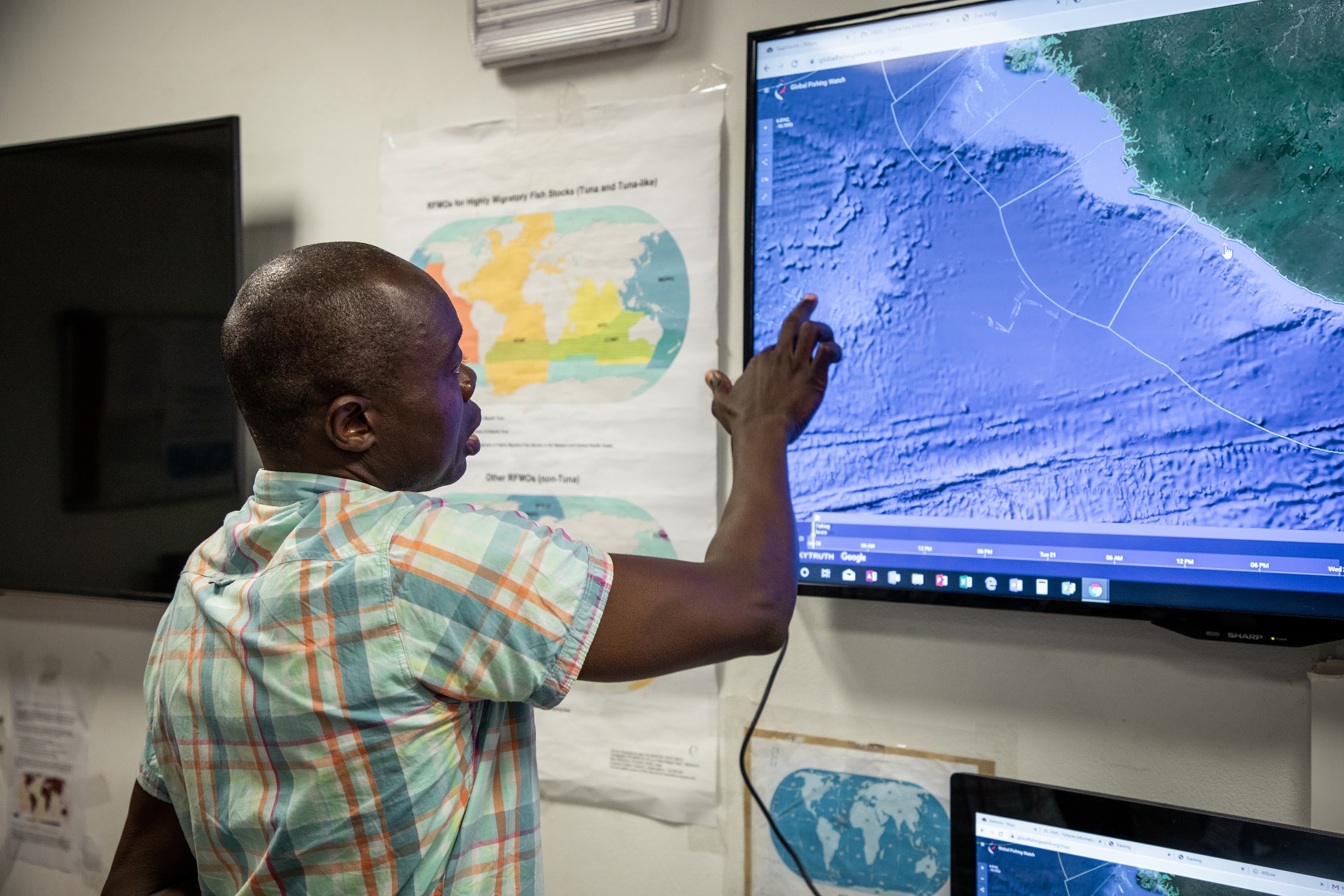What is community surveillance?
Within the context of this toolkit, community surveillance refers to the active participation of fishing communities and their representatives in identifying, documenting and reporting IUU fishing and other harmful activities that impact their livelihoods (e.g. damage to local fishing vessels or other fishing gear by industrial vessels).
What can be detected through community surveillance schemes?
Community surveillance schemes can detect a range of issues, such as illegal fishing, destructive fishing, and pollution. Within the context of this toolkit, it is predominantly aimed at detecting and reporting illegal fishing.
Illegal fishing can take many forms and whether a practice is deemed illegal will depend on the legal and regulatory frameworks that govern activities within a particular body of water. Some of these frameworks can often be found online, for example in the FAOLEX database or on the webpage of competent fishing authorities (such as a ministry for fisheries, or fisheries commission), and should be consulted if clarity is required as to whether IUU fishing has taken place.
Community surveillance is particularly useful at identifying IUU fishing in instances where industrial vessels are banned from fishing in certain areas - particularly when these prohibited areas overlap with the operating areas of small-scale fishers. Examples of these areas are marine protected areas (MPAs) that prohibit industrial fishing, and inshore exclusion zones (IEZs).
Community surveillance may also be able to detect other forms of IUU or destructive fishing such as the use of improper gear, the dumping of fish overboard, shark finning and the damage of small-scale vessels or gear. Furthermore, community surveillance can gather evidence relevant to small-scale IUU fishing at landing beaches. This can include the presence of illegal gear (e.g. lights, explosives, noxious substances) or fishers heading to sea and/or landing catch during closed fishing seasons.

In which situations might community surveillance be appropriate?
The varied nature of IUU fishing and the specific dynamics of the various global fisheries means that community surveillance will be more appropriate in some situations than in others. It is particularly applicable in coastal states:
Where IUU fishing (either by industrial or small-scale vessels) frequently goes undetected and/or unpunished.
In which small-scale fishers and industrial vessels find themselves operating in the same areas.
That have limited state and/or civil society capacity or willingness to effectively address IUU or harmful fishing activities.
Where frequent damage to small-scale fishing gear and vessels has been highlighted by community members - this often occurs as a result of illegal fishing by industrial vessels.
What are the benefits of community surveillance in addressing IUU fishing?
Gathering robust evidence of IUU fishing can be particularly challenging due to the opaque and remote nature of the industry, and can require a range of financial, technological and human resources that may not be readily available in affected countries. Furthermore, conventional monitoring methods for non-state actors, such as public vessel tracking platforms, are challenged by the ability of industrial vessels to ‘go dark’ by turning off their satellite transmitters, allowing them to hide their illegal activities.
Engaging and equipping small-scale fishers with the tools to capture this evidence provides an opportunity to build capacity and counteract ‘dark’ vessels, with the group uniquely placed to document illegalities at sea. Community surveillance techniques often rely on low-cost and easily accessible technology and approaches, meaning they are well-suited in lower income countries in the Global South that often find themselves disproportionately affected by IUU fishing.
Although there has been limited research on the topic, it is also conceivable that community surveillance projects can not only detect IUU fishing, but also deter it, particularly when they are well publicised locally and nationally. For example, both Guinea and Sierra Leone reportedly saw significant reductions in illegal fishing linked to the presence of community surveillance projects.
What evidence should be captured for effective community surveillance?
If administrative or legal action is going to be taken against a vessel, it is important that fishers are aware of the specific information they should try to capture to ensure that as strong a case as possible can be put together:
Information on the vessel’s identity: fishers should try to ensure that any photos or videos show as much information about the identity of the vessel as possible, including where relevant its name, call sign and any other vessel identifiers (such as those issued by the International Maritime Organization known as ‘IMO’ numbers) - more information on these identifiers can be found in the additional resources section, including TMT and Stop Illegal Fishing’s ‘Photo Manual for Fisheries Enforcement’.
Location data: Recording the coordinates where the vessel is located can be relevant, particularly when it is suspected of fishing without authorisation in a prohibited area.
Proof that the vessel is fishing: In most cases, it is important that photo or video evidence of IUU fishing also shows that the vessel is actively fishing, as opposed to being in transit (i.e. travelling to port, or another fishing ground). To do so, fishers should try to show that the vessel's nets or gear are submerged in the water, or to capture images or video of fish being hauled onto the boat.
In order to achieve the above, fishers may have to get relatively close to the vessel in question. However, it is important that they remain a safe distance away so as to avoid any risk of a collision and to ensure that they can leave safely should they experience any hostility.

